Route between Points, Devices and Supports
You can route branches between points, electrical devices, through supports as well as along existing curves and surfaces.
Double-click the electrical geometry in the specification tree to activate it.
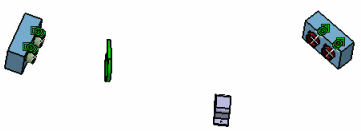
Create the first branch and define branch parameters.
Click Route Definition.
The Route Definition dialog box appears:
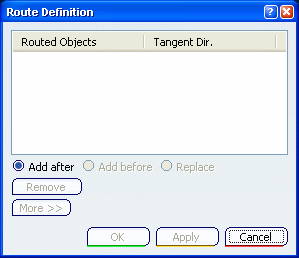
Select a first device.
Moving the pointer over a device displays segment connection points or cavity.
You can select:
-
A device.
CATIA finds the segment connection point or cavity closest to your point of
selection.
-
Published points of the device other than the segment connection
point or cavity. Moreover, there will be no link between the segment extremity
and the device, and the connection should be made using the
Connect Segments command or selecting the segment connection
point / cavity.
- Or, a label.
A red arrow appears in the geometry area showing the direction of tangency. If necessary, click
the arrow to reverse this direction.
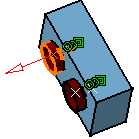
Select a support.
Moving the pointer over a support displays annotations showing the possible
entry points of a support.

You can select:

If necessary, adjust the direction and position of the branch going through the support.
Select other desired points, devices and supports.
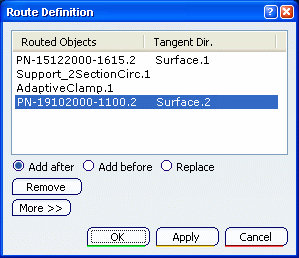
The final branch looks something like this:

If you want to route your branch in the support more than once, right-click an object and select a section. In our case, two sections are represented but if your support only contains one hole, then you don't need to choose a section.
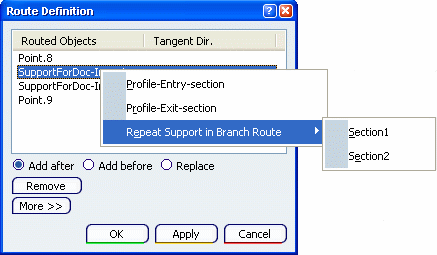
Select the object once again. You can see a preview of your branches.
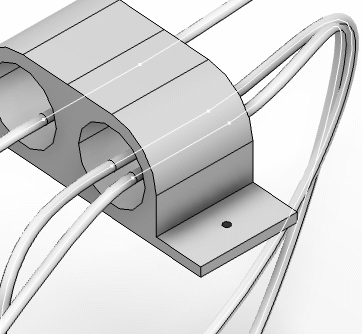
Click OK to validate. The Route Definition dialog box closes and the Branch Definition is displayed afresh. Click OK to validate the branch definition.
Optional: If you want to arrange your segments, select your product and go to Tools > Segment Arrangement > Arrange Segments or click Position in the Route Definition dialog box.


Change the Orientation and Position of Supports
You can change the orientation and position of the supports. The way through and the position of the branch inside supports are
specified when creating supports.
When routing, an arrow appears showing which way the branch will be routed through the support.

-
If necessary, select the arrow to invert the tangent direction. You can also change the orientation by clicking Reverse in the dialog box (under More>>).

When routing, you can also manage how the branch is positioned with
respect to the support:
- Click More>> in the dialog box.
- Click Position.
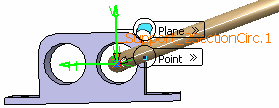
- In the Point Definition dialog box that opens, change the H and V values,
- Or click anywhere in the geometry area and reposition the point using
the 3D manipulator.
- Click OK when done to return to the Route Definition
dialog box.
Note:
After selecting the Position button, you can see either
the Point Definition or the Arrange Segments
window. It depends on the following conditions:
- If the branch has been routed in the support in V5 and the support
has been upgraded
via the
Post-Process (Tools > Finalize
Data Import), the Point Definition dialog box appears:
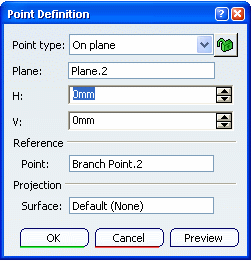
- If a branch (already routed or not) is routed in V6 in this support, the Arrange Segments dialog box appears:
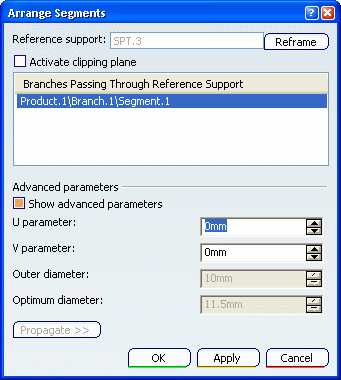
- If a branch has been routed after V5R17 in a support that has been saved after V5R17, the Arrange Segments dialog box appears.
For more information about reference support part imported via FBDI, refer to Electrical Library File-based Design Import.

Add a Tangent Constraint at a Route Point
You can add tangent constraint at a route point to maintain the tangency of the branch.
Click More>> in the Route Definition dialog box. In the Constraint type list, select Explicit or From curve.
Select the tangent direction:
- In the Tangent direction box, select a line or plane for the Explicit constraint type. The contextual menu is available you.
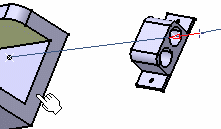
- In the Element box, select a curve for the From curve constraint type.The tangent direction is that of the selected curve.
The example below shows an edge being selected.
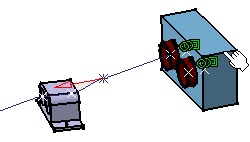
|
![]()















